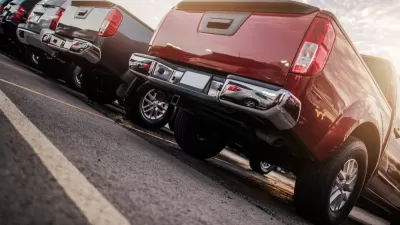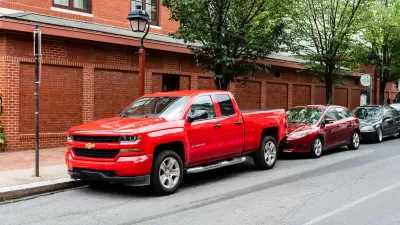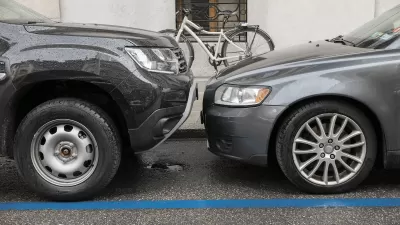Even with the growth of electric vehicles, experts say the trend toward larger, heavier vehicles is inherently incompatible with environmental goals.

Based on the amount of emissions they produced last year, the world’s SUVs are, collectively, the sixth largest emitter of carbon dioxide. Writing in The New Yorker, Elizabeth Kolbert points out that the average SUV releases 20 percent more carbon per mile driven than a medium-sized car.
“The move toward bigger and heavier vehicles, it seems pretty obvious, is incompatible with the goal of reducing global emissions.” So “Why is it that the world is moving toward heavier cars at a time when it should be doing precisely the reverse?”
One major reason, Kolbert writes, is the high price of SUVs, which are up to 51 percent more expensive than smaller cars, despite similar production costs. U.S. carmakers can also evade fuel efficiency standards by classifying vehicles as trucks. “Unfortunately, the electrical-vehicle tax credits approved last year as part of the Inflation Reduction Act give S.U.V.s similarly favorable treatment.”
In addition to carbon emissions, bigger vehicles also create more particulate pollution from tires and pose a higher risk to pedestrians. Experts suggest charging higher registration rates for heavier vehicles—a policy being considered in California—could discourage the proliferation of massive trucks and SUVs.
As Kolbert points out, replacing gas-powered cars with electric ones will only be a stopgap that reduces carbon emissions but creates other serious impacts on the environment and public safety. “Better still would be to ditch cars altogether.”
FULL STORY: Why S.U.V.s Are Still a Huge Environmental Problem

Alabama: Trump Terminates Settlements for Black Communities Harmed By Raw Sewage
Trump deemed the landmark civil rights agreement “illegal DEI and environmental justice policy.”

Planetizen Federal Action Tracker
A weekly monitor of how Trump’s orders and actions are impacting planners and planning in America.

The 120 Year Old Tiny Home Villages That Sheltered San Francisco’s Earthquake Refugees
More than a century ago, San Francisco mobilized to house thousands of residents displaced by the 1906 earthquake. Could their strategy offer a model for the present?

In Both Crashes and Crime, Public Transportation is Far Safer than Driving
Contrary to popular assumptions, public transportation has far lower crash and crime rates than automobile travel. For safer communities, improve and encourage transit travel.

Report: Zoning Reforms Should Complement Nashville’s Ambitious Transit Plan
Without reform, restrictive zoning codes will limit the impact of the city’s planned transit expansion and could exclude some of the residents who depend on transit the most.

Judge Orders Release of Frozen IRA, IIJA Funding
The decision is a victory for environmental groups who charged that freezing funds for critical infrastructure and disaster response programs caused “real and irreparable harm” to communities.
Urban Design for Planners 1: Software Tools
This six-course series explores essential urban design concepts using open source software and equips planners with the tools they need to participate fully in the urban design process.
Planning for Universal Design
Learn the tools for implementing Universal Design in planning regulations.
Clanton & Associates, Inc.
Jessamine County Fiscal Court
Institute for Housing and Urban Development Studies (IHS)
City of Grandview
Harvard GSD Executive Education
Toledo-Lucas County Plan Commissions
Salt Lake City
NYU Wagner Graduate School of Public Service





























